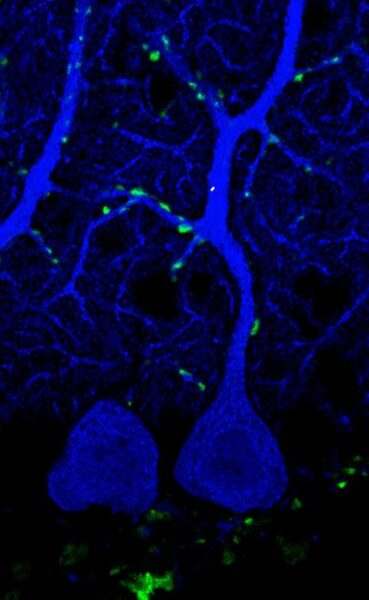A new study has uncovered a vital mechanism in the formation of synapses – the connection points between neurons – in the cerebellum. The research, led by scientists from Spain and Japan, highlights the unexpected role of a specific glutamate receptor in building and maintaining these crucial brain connections.
Kainate Receptors: More Than Just Signal Receivers
The Institute of Neurosciences (IN) in Spain, working with Keio University in Tokyo, has demonstrated that kainate receptors play a dual role in cerebellar synapses. These receptors not only receive neurotransmitter signals but also act as structural scaffolds that support the physical connections between neurons.
Published in Cell Reports, the study focuses on the GluK4 protein, a subunit of kainate receptors. The researchers found that GluK4, expressed in cerebellar Purkinje neurons, is essential for forming synapses between these neurons and climbing fibers.
“For many years, we have tried to find out what the function of kainate receptors is in synaptic physiology and brain pathologies,” says CSIC researcher Juan Lerma, who leads the Synaptic Physiology laboratory at IN.
Implications for Motor Learning and Disease
The team’s findings have significant implications for understanding motor learning and potential treatments for neurological disorders. When kainate receptors are suppressed, synaptic plasticity – the brain’s ability to form and modify connections – is severely impacted.
Ana Valero Paternain, co-first author of the study, explains: “Synaptic plasticity is the brain’s ability to form connections and modulate them depending on its needs. When plasticity fails, serious motor defects occur.”
The researchers observed that mice with reduced numbers of these synapses struggled to learn motor behaviors. This insight could be crucial for developing new therapies for conditions affecting motor skills and learning.
Wataru Kakegawa, the other co-first author, adds: “In the laboratory, we have verified that when the number of synapses is reduced, mice are not able to learn motor behaviors.”
The study’s findings open up promising avenues for future therapeutic applications. Synthetic synaptic connectors modeled after these proteins have already shown potential in restoring damaged synapses in mouse models of Alzheimer’s disease and spinal cord injuries.
By revealing the complex interplay between kainate receptors and other synaptic proteins, this research not only deepens our understanding of brain function but also paves the way for innovative approaches to treating neurological disorders. As scientists continue to unravel the intricacies of synaptic formation and plasticity, we may be one step closer to developing targeted therapies for a range of brain-related conditions.


